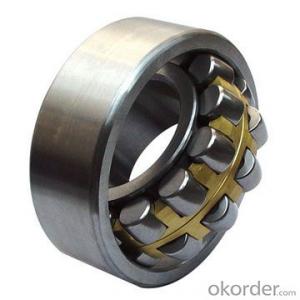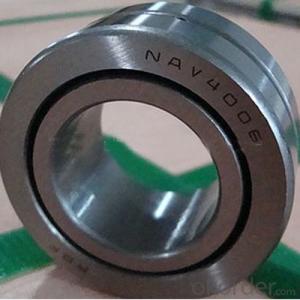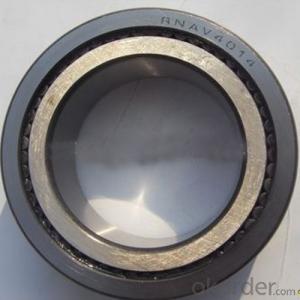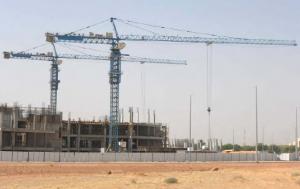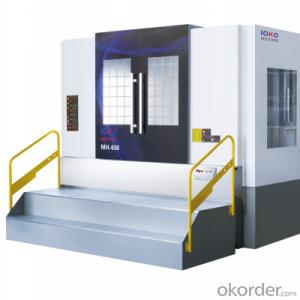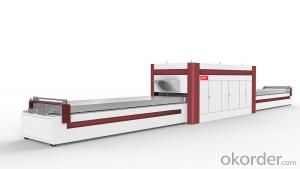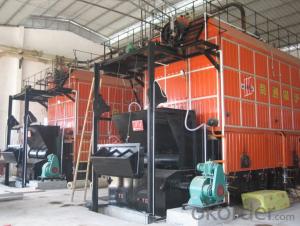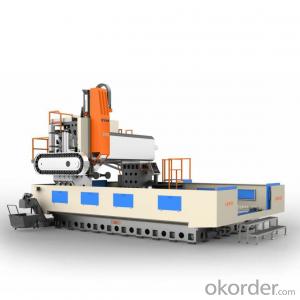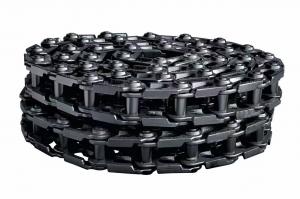Full Complement Needle Roller Bearing HRC60
- Loading Port:
- Shanghai
- Payment Terms:
- TT OR LC
- Min Order Qty:
- 1 pc
- Supply Capability:
- 1000 pc/month
OKorder Service Pledge
OKorder Financial Service
You Might Also Like
Product information:
As for the full complement needle roller bearing with inner ring,the outer ring has the oil hole.The lubricating oil can be fed in from the oil hole. The outer ring has the double shoulders. As for the full complement needle roller bearing without inner ring,since the inner ring has no shoulder and cage,the inner ring,outer ring,complete set of needles can be mounted respectively.It is s suitable for parts of which the radial size is limited.The surface of shaft journal fitted with it is acted directly as rolling surface.
Size:
NAV4914
NAV4014
NAV4015
NAV4916
NAV4016
NAV4017
NAV4918
NAV4919
NAV4920
NAV4832
Salient features:
It is requested that the surface hardness be no less than HRC60,surface roughness,no more than 0.63μm. This kind of full complement bearing, with inner ring or without inner ring,does not limit the axial shift of shaft and housing.
Since this kind of bearing has no cage,the needles rotate without correct guiding,they rub heavily against each other and the bearing has the low limiting rotational speed.
Advantages of our products:
Premium quality
· Prompt delivery & seaworthy packing (5-10 days)
Reliable performance
Easy to weld
High safety.
· Professional Service
· Competitive pricing
Measuring of wall thickness from the outside
Low purchase cost
FAQ:
Q1: How long about delivery time?
A1: Normally we keep the raw materials for old customers and sometime we also keep stock products to make sure delivery time in any emergency cases.
Q2: How do we guarantee the quality of our pipes?
A2: We have established an advanced quality management system which conducts strict quality tests at every step, from raw materials to the final product. At the same time, we provide extensive follow-up service assurances as required.
Q3: How soon can we receive the product after purchase?
A3: Within three days of placing an order, we will book the vessel for goods. The specific shipping date is dependent upon international and government factors, but is typically 7 to 30 workdays.
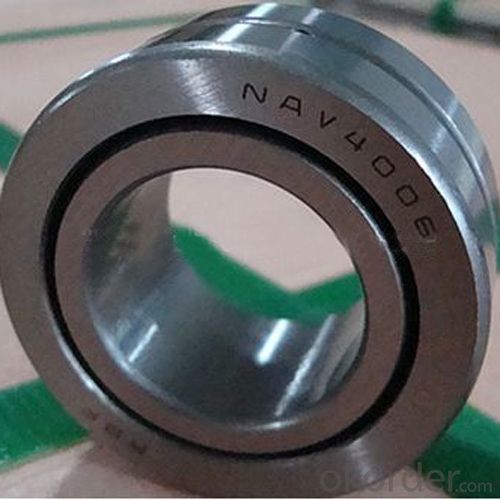
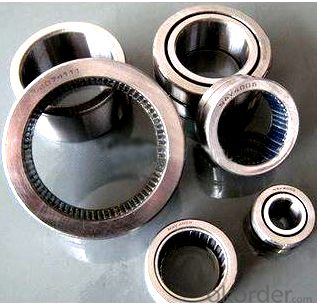
- Q:What are the common issues that require replacement of concrete pump spare parts?
- Common issues that often require the replacement of concrete pump spare parts include wear and tear from continuous use, damage caused by debris or foreign objects in the concrete mix, corrosion due to exposure to harsh chemicals or weather conditions, and malfunctioning or worn-out components such as seals, valves, or pistons.
- Q:What are the indications of an inaccurate concrete pump pressure gauge?
- There are several indications that can suggest an inaccurate concrete pump pressure gauge. Here are a few: 1. Inconsistent readings: If the pressure gauge consistently gives varying readings even when the concrete pumping conditions remain constant, it could be a sign of an inaccurate gauge. For example, if the gauge displays a pressure of 1000 psi one moment and then jumps to 1500 psi without any significant changes in the pumping operation, it could indicate an issue with the gauge. 2. Unusual or abnormal readings: If the pressure gauge consistently displays extremely high or low pressure readings that are significantly different from the expected values, it could signify an inaccurate gauge. It is important to be aware of the typical pressure range for the specific concrete pumping operation to identify abnormal readings. 3. Incongruity with other gauges: If there are multiple pressure gauges installed in the concrete pumping system, and they provide significantly different readings, it could suggest that one or more of the gauges are inaccurate. Comparing the readings of various gauges can help determine if a particular gauge is faulty. 4. Inadequate pump performance: If the concrete pump is not performing as expected, such as experiencing reduced output or inconsistent flow rates, it could be due to inaccurate pressure readings. Inaccurate pressure measurements can affect the control of the pump's hydraulic system, leading to inefficiencies in pumping operations. 5. Physical damage or wear: Any visible damage or signs of wear on the pressure gauge, such as cracked glass, bent needles, or loose connections, can compromise its accuracy. Such physical damage can lead to inaccurate readings and should be addressed promptly. It is important to regularly calibrate and maintain the pressure gauge to ensure accurate readings. If any indications of an inaccurate gauge are observed, it is recommended to consult a professional technician or engineer to assess the situation and take appropriate actions to rectify the issue.
- Q:What are the indications of a faulty control lever?
- There are multiple indications that may suggest a malfunctioning control lever. Firstly, if the control lever does not respond or is sluggish when attempting to engage or disengage a specific function, it could be indicative of an issue. This may include difficulties in shifting gears, adjusting speed, or operating various controls such as the throttle or clutch. Another sign of a faulty control lever is if it becomes loose or unstable. If you observe excessive play or movement in the lever, it could imply that the mechanism connecting the lever to the control system is worn out or damaged. This can compromise the accuracy and precision of the control lever, making it challenging to effectively operate the intended functions. Furthermore, any unusual noises or vibrations originating from the control lever can serve as an indication of a fault. This might be a consequence of loose or broken components within the control lever assembly, suggesting the need for inspection and repair. Lastly, if the control lever becomes stuck or jammed in a particular position, it clearly signifies a faulty lever. This can hinder proper control of the equipment or vehicle, posing safety risks. In any case, if there is suspicion of a faulty control lever, it is crucial to have it inspected and repaired by a qualified technician to ensure proper functioning and safe operation.
- Q:How do concrete pump spare parts help in the pumping process?
- Concrete pump spare parts play a crucial role in the pumping process by ensuring the smooth and efficient operation of the equipment. These spare parts, such as seals, cylinders, pistons, and valves, help maintain the integrity of the pump and prevent potential breakdowns or malfunctions. They also assist in controlling the flow and pressure of the concrete, allowing for precise and accurate placement. In summary, concrete pump spare parts are essential components that enhance the reliability, performance, and overall productivity of the pumping process.
- Q:How do I properly maintain and replace concrete delivery pipes in concrete pump spare parts?
- To ensure the concrete pump operates efficiently and safely, it is crucial to properly maintain and replace the concrete delivery pipes in spare parts. Here are some guidelines you can adhere to: 1. Conduct Regular Inspections: Frequently check the concrete delivery pipes for signs of wear, cracks, or damage. Look out for leaks or blockages that may hinder the concrete flow. Identify weak areas that may necessitate replacement. 2. Perform Thorough Cleaning: After each use, clean the concrete delivery pipes meticulously. Use water and a high-pressure hose to eliminate any concrete residue or buildup. This will prevent clogs and maintain a smooth concrete flow. 3. Apply Lubrication: Reduce friction and prevent concrete from adhering to the inner surface of the pipes by applying a suitable lubricant. This practice will elongate the life of the pipes and guarantee a seamless concrete flow. 4. Replace Worn-out Components: Regularly monitor the condition of the delivery pipes and promptly replace any worn-out or damaged parts. Over time, the pipes may corrode or develop cracks, thereby affecting their performance. Replace these components with premium spare parts to achieve optimal outcomes. 5. Handle with Care: Exercise caution when handling the concrete delivery pipes to avoid unnecessary damage. Refrain from dropping or mishandling the pipes during transportation or storage. Shield them from extreme weather conditions and store them in a secure, dry location. 6. Prioritize Training and Safety: Ensure that the personnel operating the concrete pump are well-versed in handling and maintaining the equipment. Educate them on the significance of regular inspections, cleaning, and part replacement. Emphasize safety protocols to prevent accidents and ensure the durability of the concrete delivery pipes. By adhering to these steps, you can effectively maintain and replace the concrete delivery pipes in spare parts for the concrete pump. Consistent maintenance and prompt part replacement will extend the lifespan of the pipes and guarantee a seamless concrete flow during construction projects.
- Q:How can one determine the correct voltage and current rating for electrical components in concrete pump spare parts?
- To determine the correct voltage and current rating for electrical components in concrete pump spare parts, several factors need to be considered. Firstly, it is essential to consult the manufacturer's specifications and documentation for the concrete pump and its spare parts. These documents usually provide detailed information about the voltage and current requirements for each electrical component. Paying close attention to these guidelines ensures that the components are operated within their designed parameters. Secondly, it is crucial to understand the electrical system and its requirements. This involves analyzing the power supply available at the site where the concrete pump will be used. Factors such as the voltage level (e.g., 110V, 220V, 440V) and frequency (e.g., 50Hz, 60Hz) of the electrical supply need to be taken into account. Additionally, the maximum current capacity of the electrical system must be considered to prevent overload situations. Furthermore, it is advisable to assess the specific application and operating conditions of the concrete pump. Different components may have varying voltage and current requirements depending on their function and the environment in which they are used. For instance, components installed in outdoor areas may require higher voltage ratings to withstand harsh weather conditions. Lastly, seeking professional assistance from qualified electricians or engineers is highly recommended. They possess the expertise and knowledge to accurately determine the voltage and current ratings for electrical components in concrete pump spare parts. Their experience allows them to consider various factors such as safety regulations, compatibility with the existing electrical system, and any specific requirements of the concrete pump manufacturer. By taking into account the manufacturer's specifications, understanding the electrical system, considering the application and operating conditions, and seeking professional advice, one can effectively determine the correct voltage and current rating for electrical components in concrete pump spare parts.
- Q:Are there any specific maintenance procedures for concrete pump spare parts?
- Yes, there are specific maintenance procedures for concrete pump spare parts. Regular maintenance is crucial to ensure the effective functioning and longevity of the equipment. Here are some key maintenance procedures for concrete pump spare parts: 1. Lubrication: Regularly lubricate all moving parts such as pistons, cylinders, and valves to minimize friction and wear. This helps to maintain smooth operation and prevent premature failure. 2. Cleaning: Clean the spare parts regularly to remove any debris, dirt, or concrete buildup. Accumulated material can hinder the performance and cause damage to the parts. Use appropriate cleaning agents and tools to ensure a thorough cleaning. 3. Inspection: Conduct routine inspections of all spare parts to identify any signs of wear, damage, or deterioration. Check for cracks, leaks, loose connections, or any abnormal functioning. Timely detection of issues allows for prompt repairs or replacements. 4. Replacement: Replace worn-out or damaged concrete pump spare parts as soon as necessary. Delaying replacements can lead to further damage and potentially expensive repairs. Follow the manufacturer's recommendations for the lifespan of specific parts and replace them accordingly. 5. Calibration: Ensure that all spare parts are correctly calibrated to maintain optimum performance. This includes adjusting pressure settings, flow rates, and other parameters according to the manufacturer's guidelines. Regular calibration helps to ensure accurate and efficient concrete pumping. 6. Storage: Properly store spare parts when not in use to prevent damage from environmental factors. Keep them in a clean and dry place, away from direct sunlight or extreme temperatures. Additionally, follow any specific storage instructions provided by the manufacturer. 7. Training: Train operators and maintenance personnel on the proper handling, maintenance, and repair of concrete pump spare parts. This will ensure that the procedures are followed correctly, minimizing the risk of damage and maximizing the lifespan of the equipment. By following these specific maintenance procedures, concrete pump spare parts can be kept in optimal condition, enhancing their performance, reliability, and longevity.
- Q:Can I get spare parts for both single-cylinder and multi-cylinder concrete pumps?
- Spare parts for both single-cylinder and multi-cylinder concrete pumps are readily available. Various manufacturers and suppliers offer a wide range of spare parts for different concrete pump types, including single-cylinder and multi-cylinder models. These spare parts comprise hydraulic cylinders, pistons, seals, valves, hoses, and other crucial components that may require replacement due to wear and tear or damage. To ensure compatibility and availability, it is vital to contact the concrete pump's specific manufacturer or supplier and inquire about the spare parts suitable for your particular model.
- Q:How can you determine when a concrete pump pipe needs to be replaced?
- Determining whether a concrete pump pipe requires replacement involves several factors to consider. 1. Visual Examination: Thoroughly inspect the pipe visually, searching for cracks, damages, or indications of wear and tear. Pay close attention to the pipe's ends where it connects to the pump and nozzle, as these regions are more susceptible to damage. 2. Performance Assessment: Observe the concrete pump's performance. If there is a decline in pumping efficiency, such as reduced output or difficulties in maintaining pressure, it may indicate a pipe problem. Furthermore, excessive leakage or blockages in the pipe could signify the need for replacement. 3. Age and Usage: Take into account the pipe's age and the extent of its usage. Concrete pump pipes have a limited lifespan, and over time and extensive use, they can deteriorate and lose their structural integrity. If the pipe is old and has undergone substantial use, it might be time for a replacement. 4. Regular Maintenance and Repairs: Frequent repairs or maintenance on the pipe could suggest that it is approaching the end of its lifespan. While regular maintenance can extend the pipe's life, if repairs are becoming more frequent and costly, it may be more cost-effective to replace it. 5. Safety Considerations: Prioritize safety when deciding on pipe replacement. If there are significant structural issues or concerns about the pipe's ability to handle pressure, it is crucial to replace it to prevent potential accidents or hazardous situations. Ultimately, the decision to replace a concrete pump pipe should be based on a combination of visual inspection, performance evaluation, age, usage, regular maintenance, and safety considerations. It is advisable to seek guidance from a professional or experienced technician who can assess the pipe's condition and offer expert advice on whether replacement is necessary.
- Q:Can a concrete pump pipe be repaired or should it be replaced?
- A concrete pump pipe can typically be repaired rather than replaced, depending on the extent of the damage.
1. Manufacturer Overview |
|
|---|---|
| Location | |
| Year Established | |
| Annual Output Value | |
| Main Markets | |
| Company Certifications | |
2. Manufacturer Certificates |
|
|---|---|
| a) Certification Name | |
| Range | |
| Reference | |
| Validity Period | |
3. Manufacturer Capability |
|
|---|---|
| a)Trade Capacity | |
| Nearest Port | |
| Export Percentage | |
| No.of Employees in Trade Department | |
| Language Spoken: | |
| b)Factory Information | |
| Factory Size: | |
| No. of Production Lines | |
| Contract Manufacturing | |
| Product Price Range | |
Send your message to us
Full Complement Needle Roller Bearing HRC60
- Loading Port:
- Shanghai
- Payment Terms:
- TT OR LC
- Min Order Qty:
- 1 pc
- Supply Capability:
- 1000 pc/month
OKorder Service Pledge
OKorder Financial Service
Similar products
New products
Hot products
Related keywords
